Please scroll down for updates. They are added after the original text.
Solar activity has been quiet the last few days, with only a few small sunspot regions visible and only an occasional filament eruption. Thus, space weather forecasters were a little bit puzzled by the elevated radio flux values observed on 14 April (Penticton), as well as the undulating, increasing soft x-ray (SXR) flux as observed by the GOES satellites. From 13 to 14 April, the 10.7 cm radio flux rose from 98.7 to 103.4 sfu (20UT values), while the SXR flux started a generally increasing trend with 2 pronounced enhancements and current values above the C1 level, as can be seen in the graph underneath.
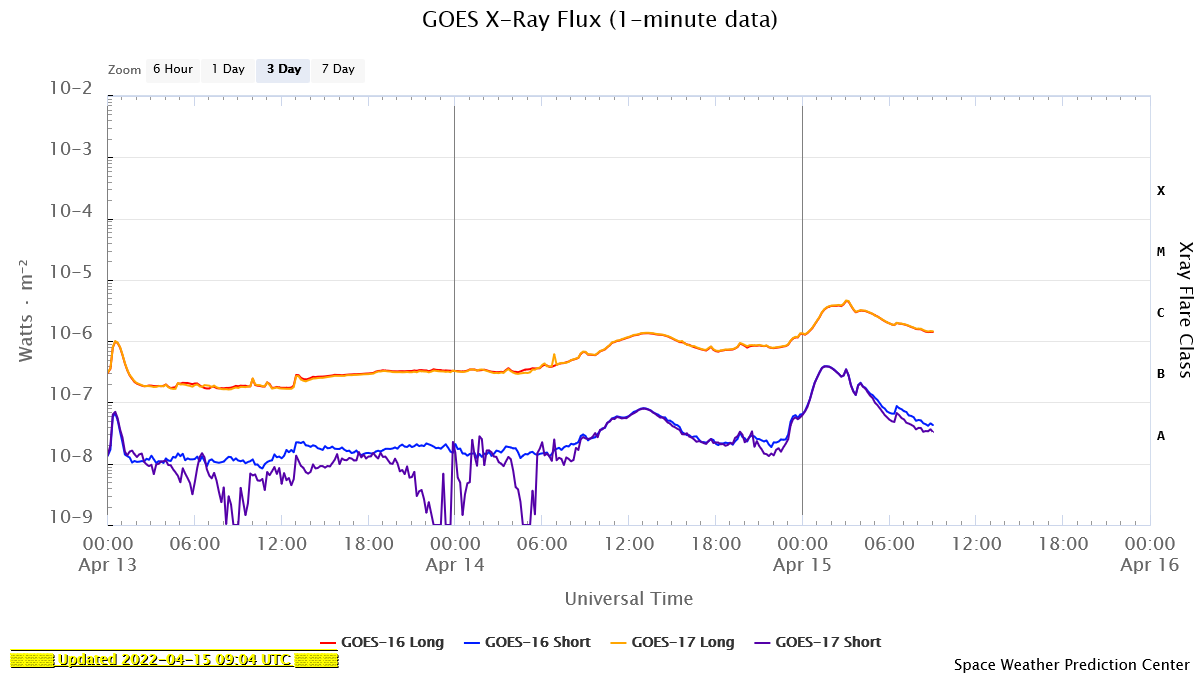
Extreme ultraviolet (EUV) imagery solved the issue. SDO/AIA 094 showed substantial activity from a source behind the Sun's east limb. The eruptions themselves can't be seen, but the subsequent post-eruption coronal loops are large enough to become visible from behind the Sun's limb, as can be seen in the clip underneath. The emission associated with these eruptive events influenced both the radio and SXR flux values recorded. Also the 13 April halo CME seems to have originated from this source.

Helioseismological imagery (JSOC/Stanford ; see this STCE news item for more info on helioseismology) indicate there is a substantial active region just behind the solar limb, i.e. the black area at about 15 degrees north and longitude 110 degrees in the synoptic map underneath. This is the same area as NOAA 2975/2976/2984 sunspot region complex that rounded the west limb nearly 2 weeks ago, on 3-4 April. NOAA 2975 was very active during its previous transit, producing numerous M-class flares and even an X-class flare on 30 March (see this STCE news item). So, while still about a day behind the east limb but already influencing SXR and radio flux with their ongoing activity, this sunspot complex apparently is still alive and kicking, and may promise some interesting activity during the upcoming days...

UPDATE 1 - 16 April 2022 (06:30UT)
Two big sunspots have emerged from behind the northeast limb, as can be seen in the annotated SDO/HMI image underneath. This sunspot complex was the source of a series of M-class flares on 15 April. More M-class flares are expected, with an X-class event not excluded. As the sunspot regions rotate further over the solar limb and observers get a better view on their magnetic structure, more accurate predictions can be made.
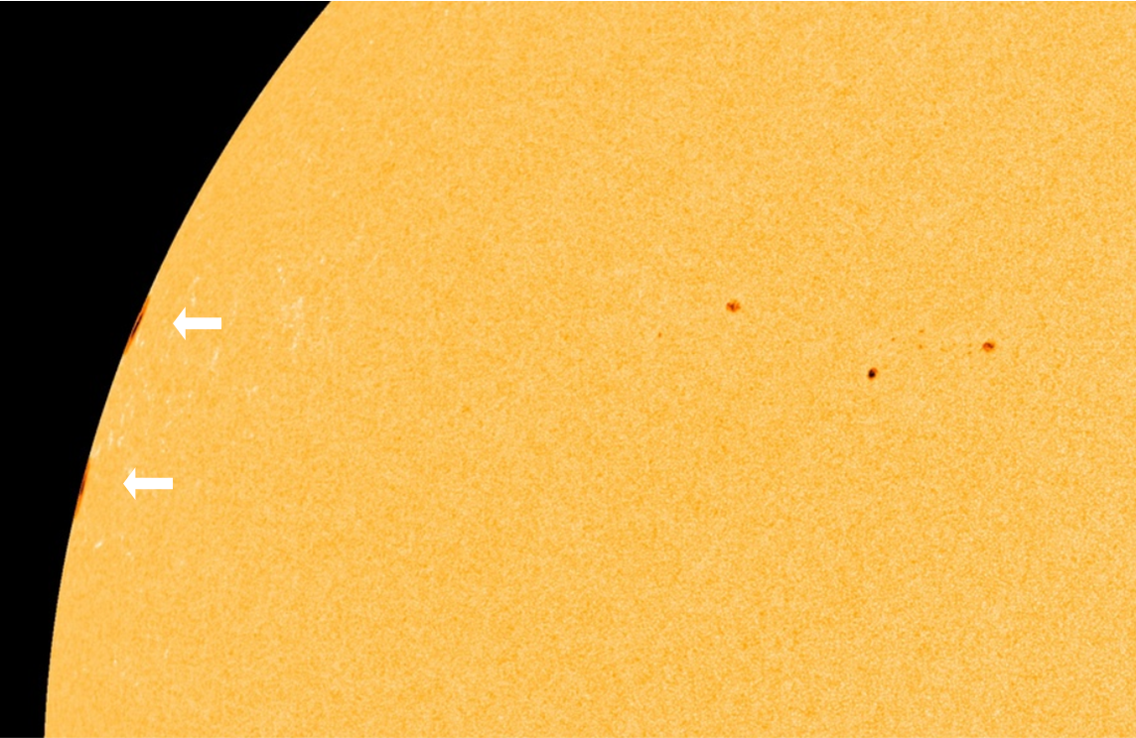
UPDATE 2 - 17 April 2022 (08:15UT and 17:15UT)
NOAA 2994, the southern of the two big sunspot groups near the northeast solar limb, produced the easter egg of the day. This active region was the source of an X1.1 flare which peaked at 03:34UT on 17 April, resultingin a strong radio blackout (R3 on the NOAA scale) over east Asia and Australia (D-RAP). SIDC forecasters reported that "The flare was associated with the fast partial halo CME with velocity of about 1000 km/s (as reported by CACTUS software) and the angular width of about 170 degrees. The glancing blow from the CME-driven shock can be expected at Earth on April 19.". There remains a further possibility on an X-class event from this sunspot complex.
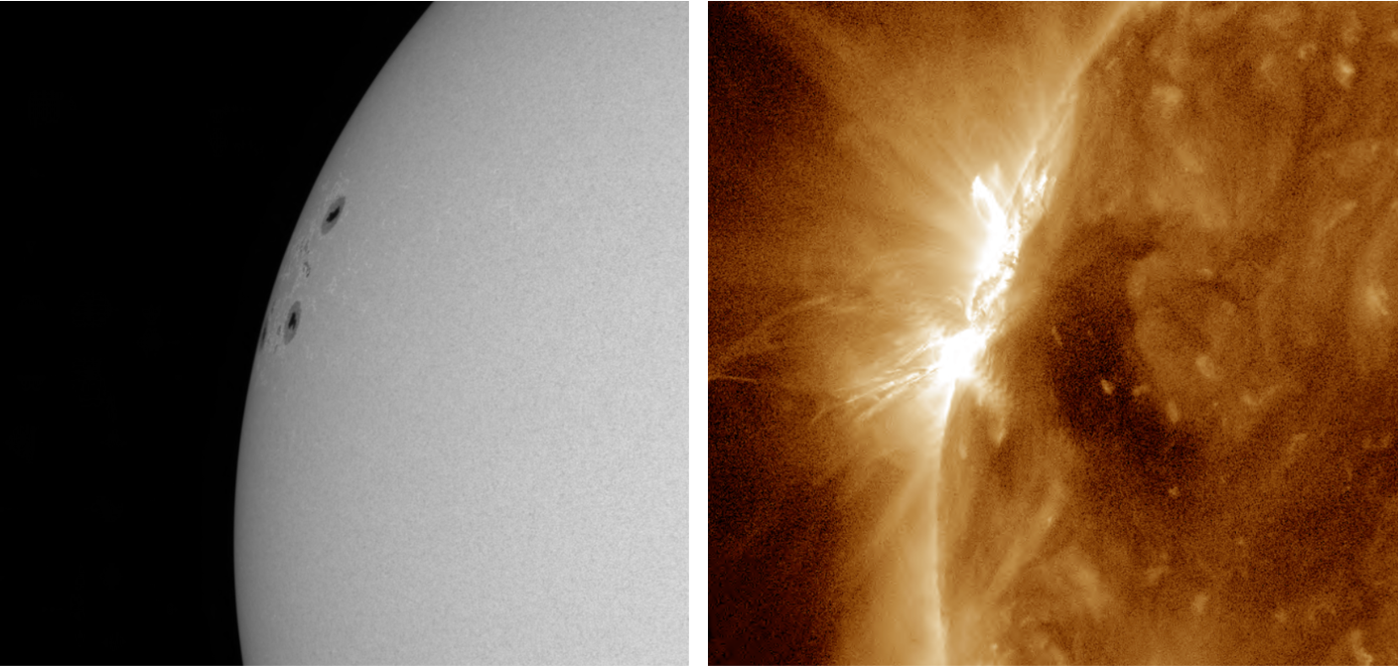
SDO/HMI white light image (left) and in EUV (AIA 193 - right) at the time of the flare peak
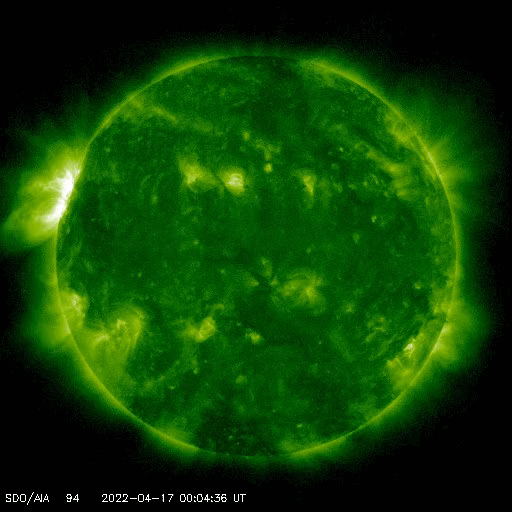
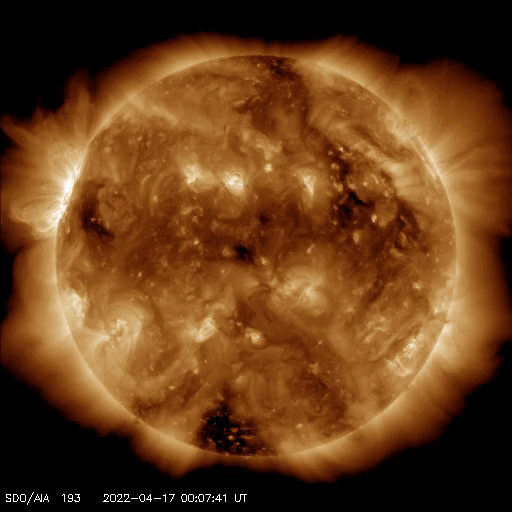
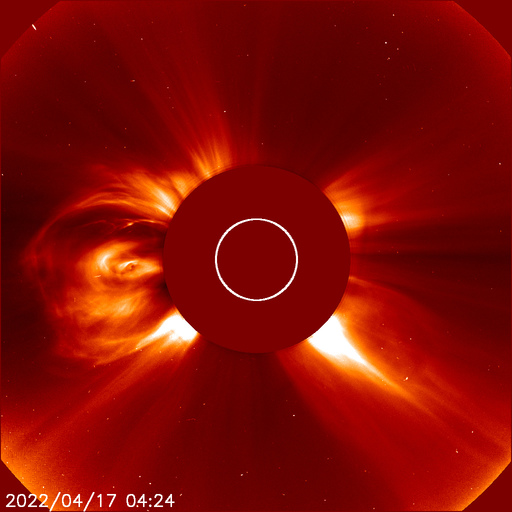
SOHO/LASCO C2 coronagraph image showing a CME near the Sun's east limb (left)






